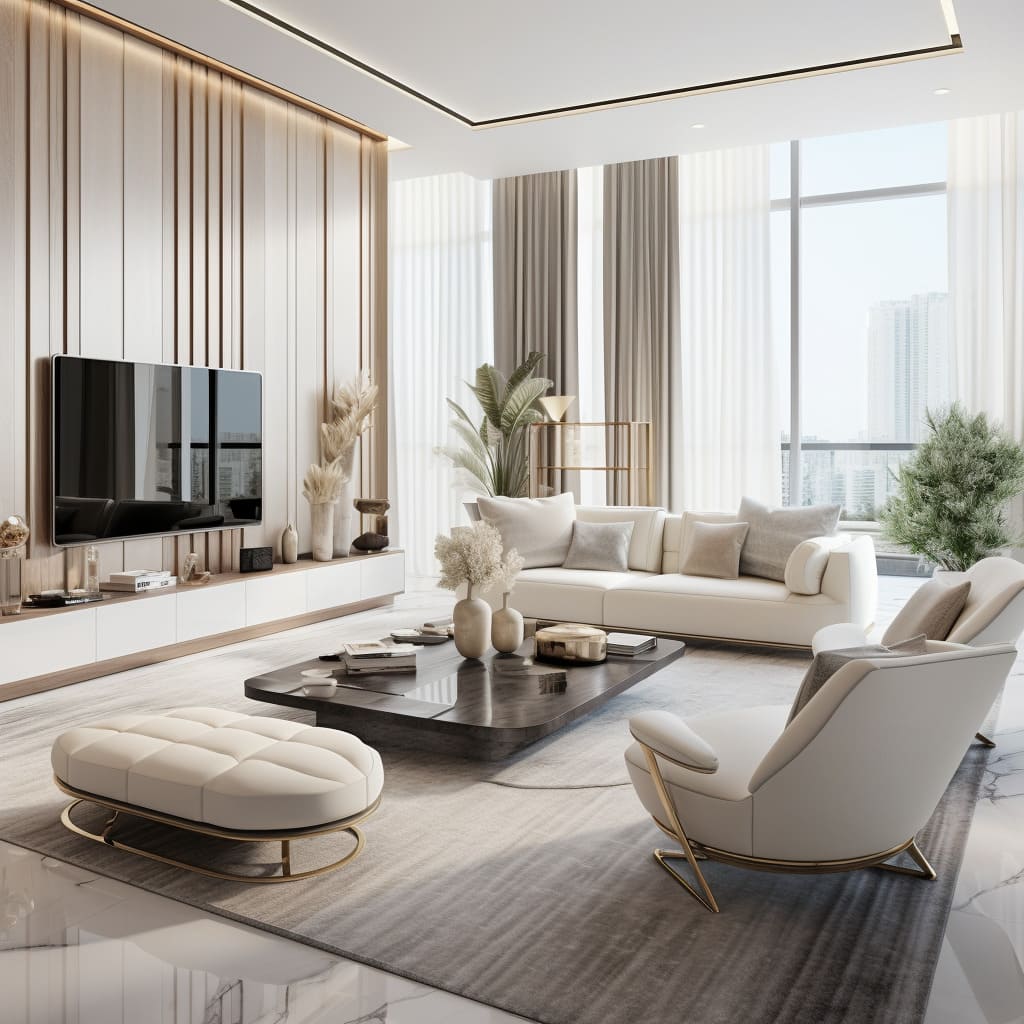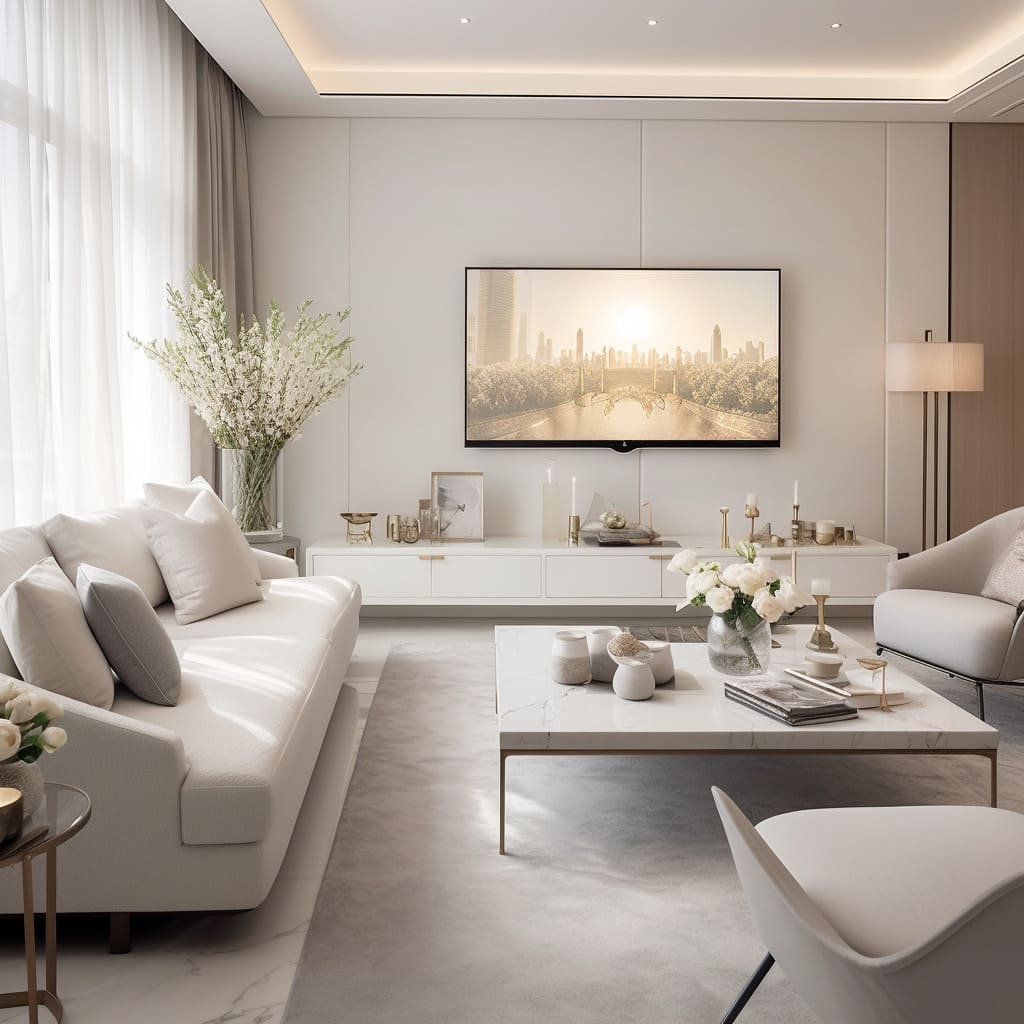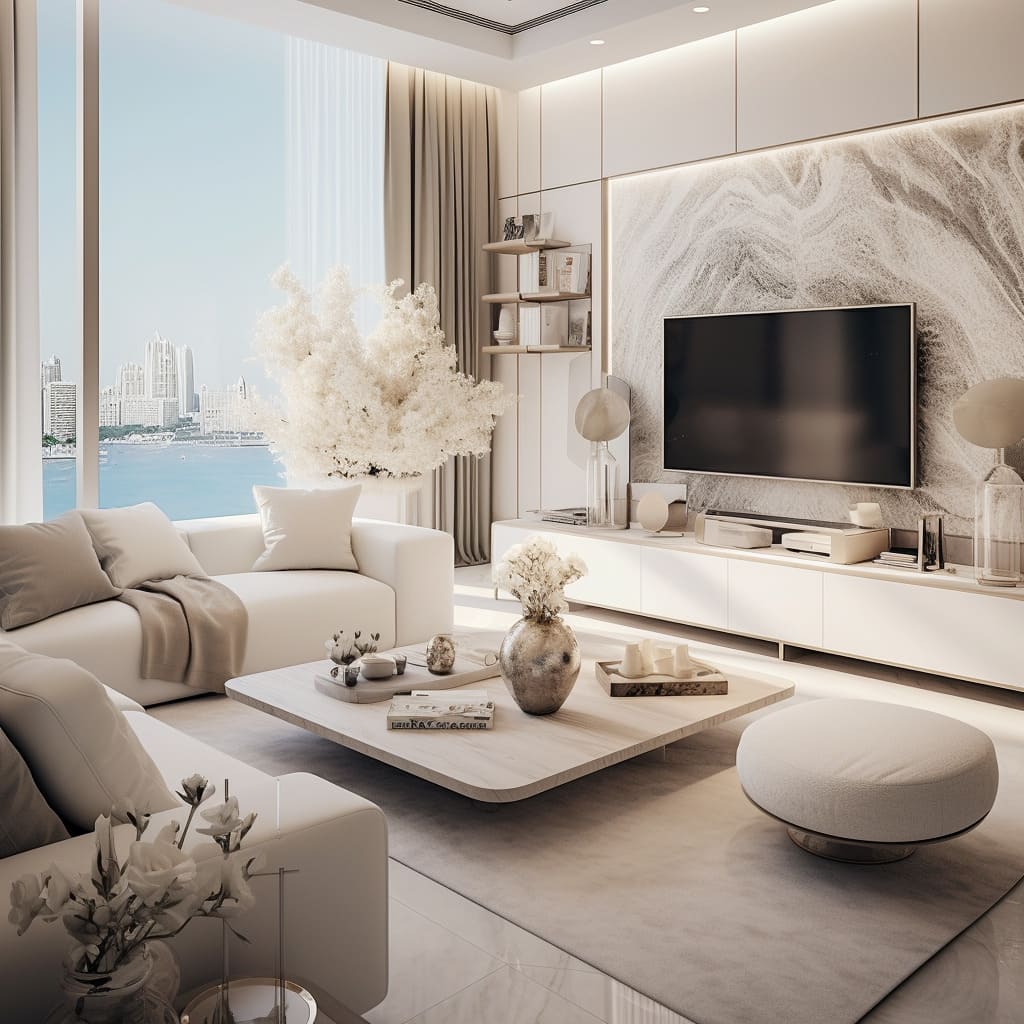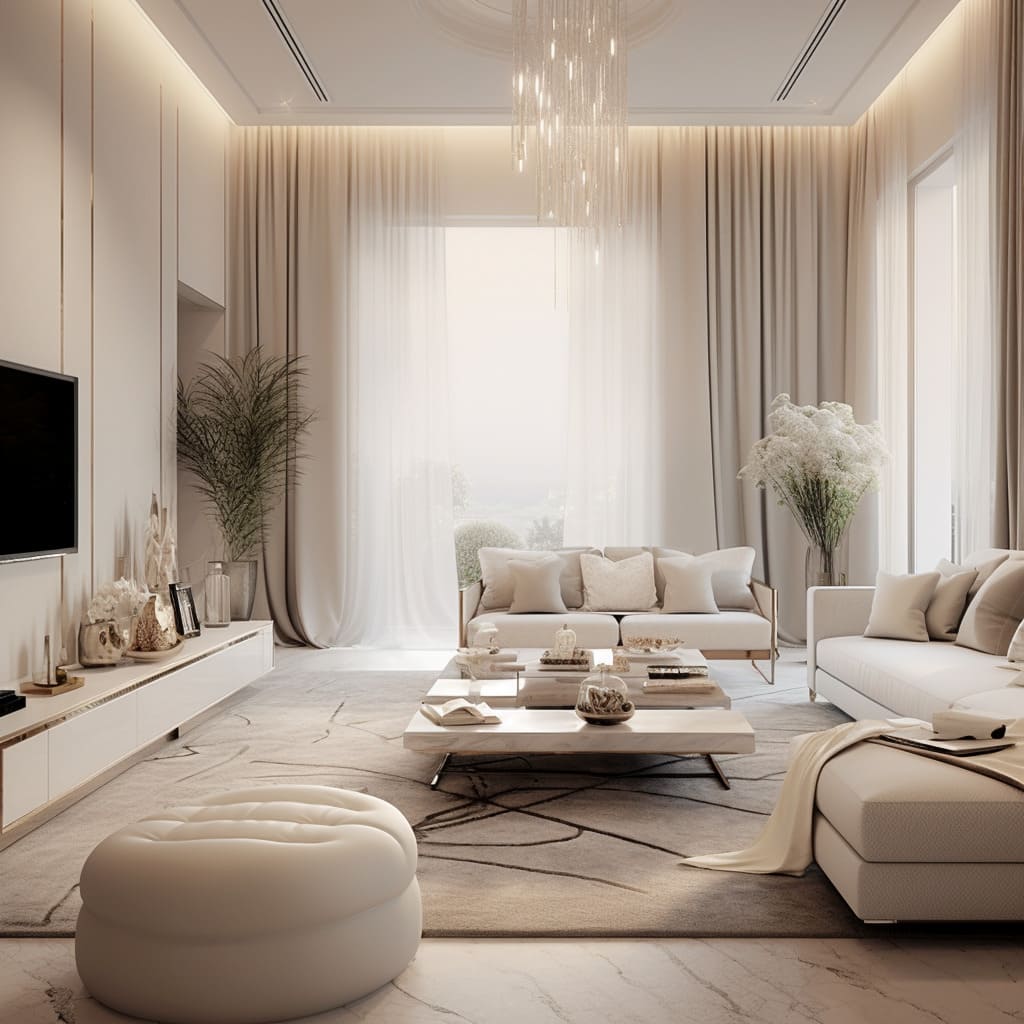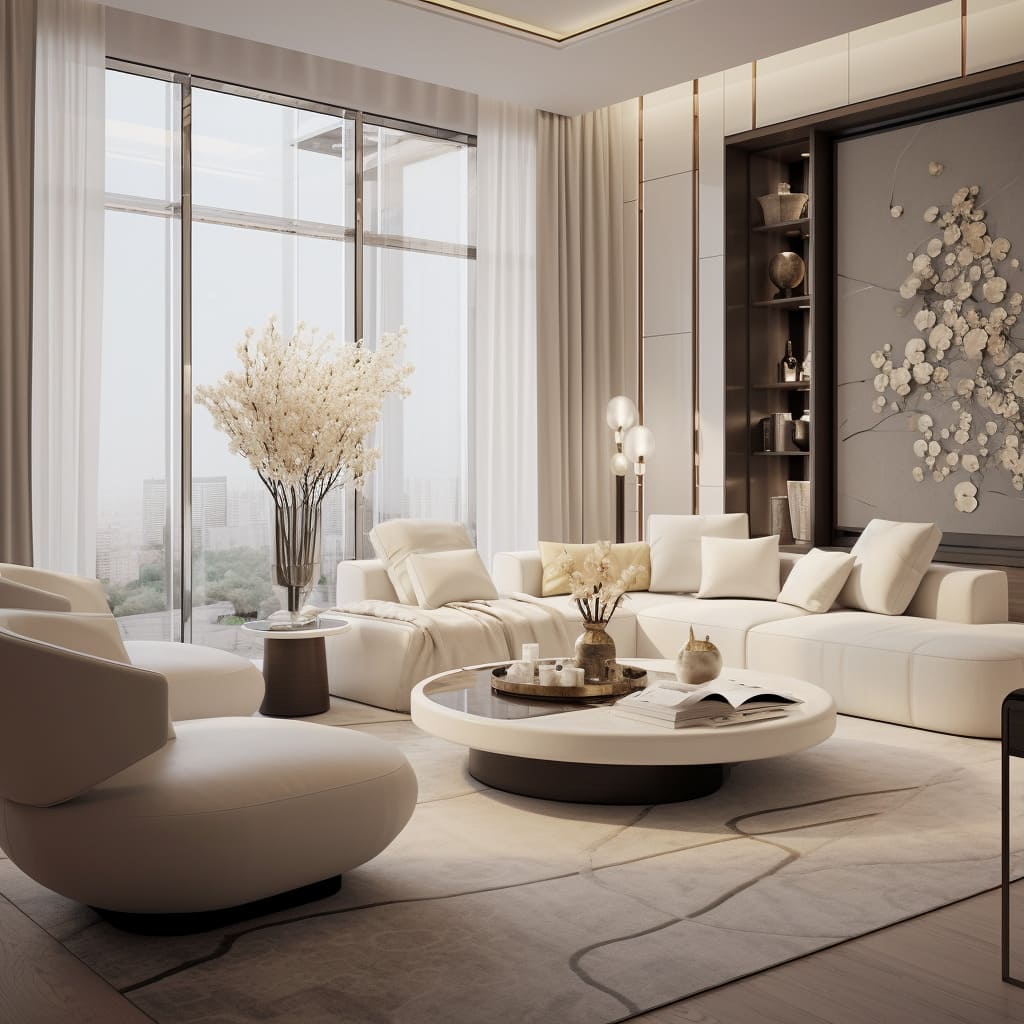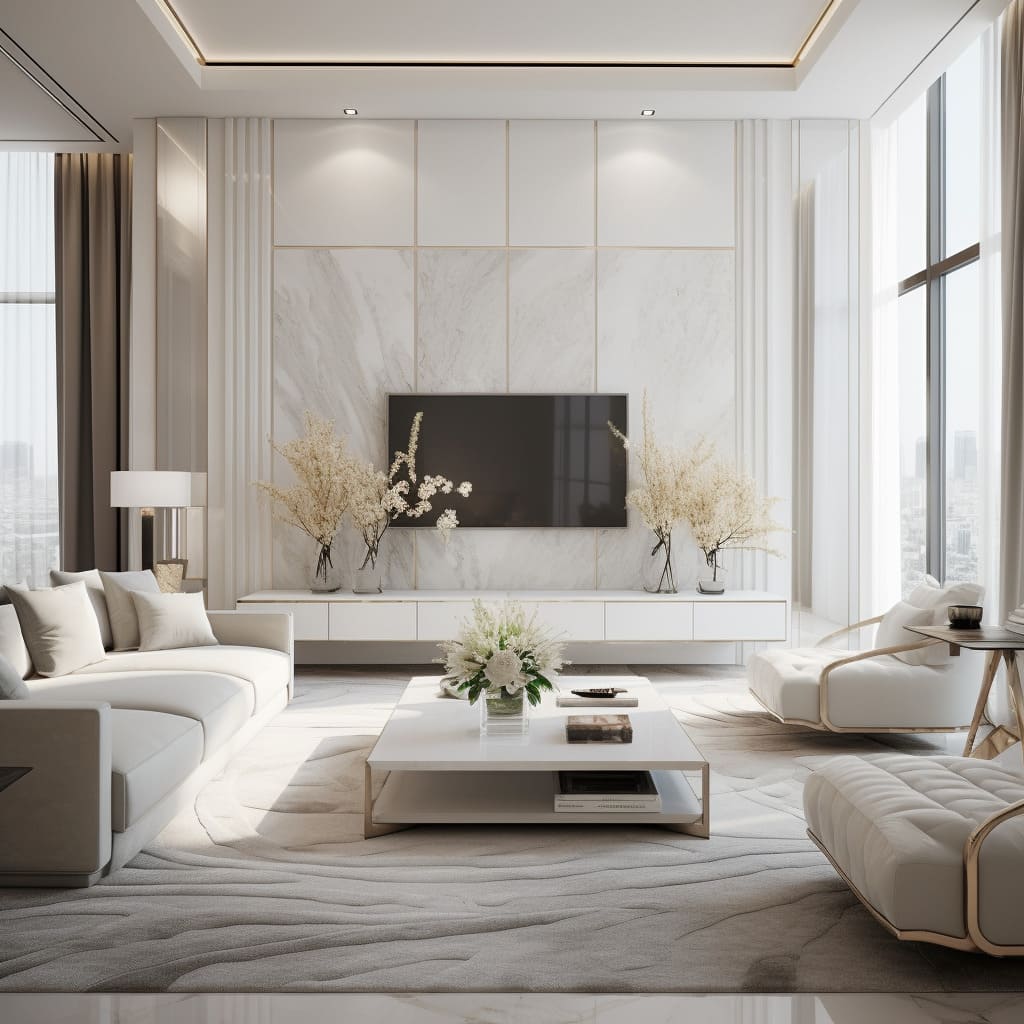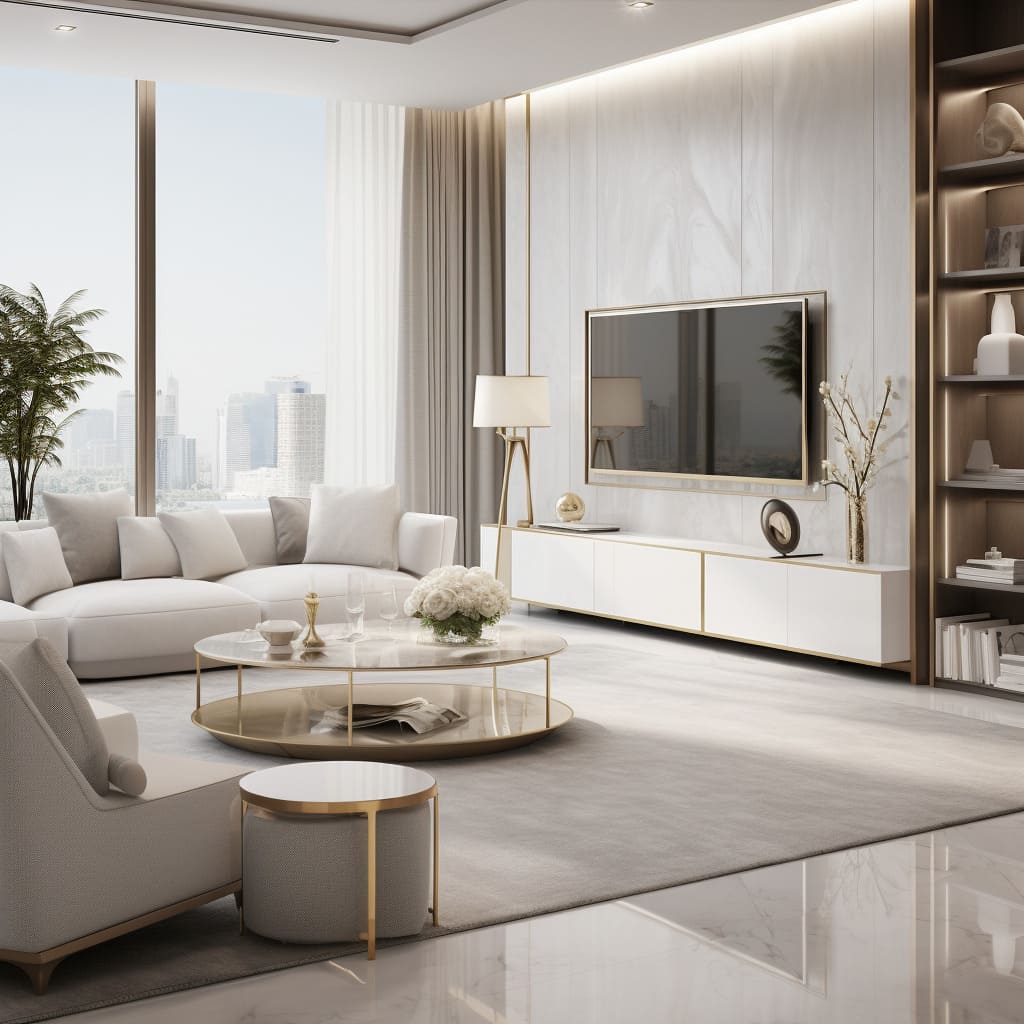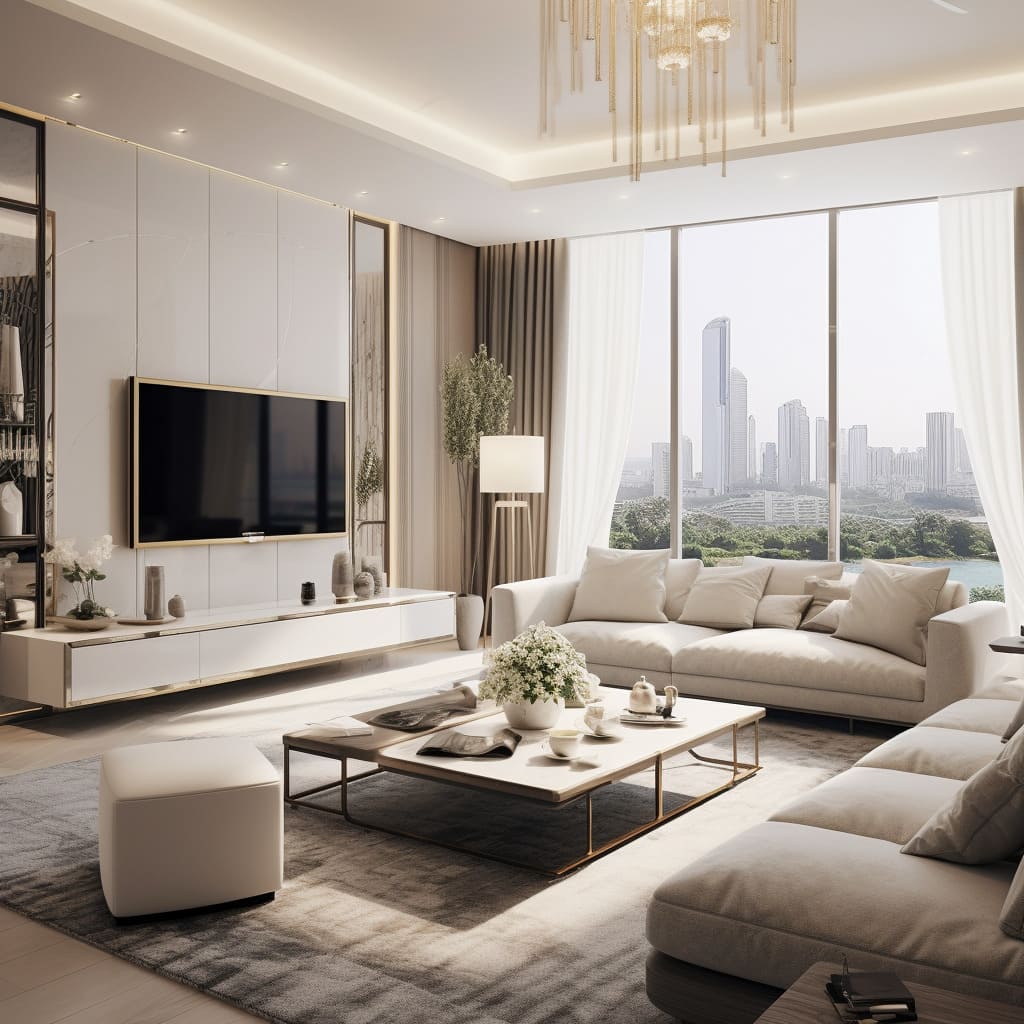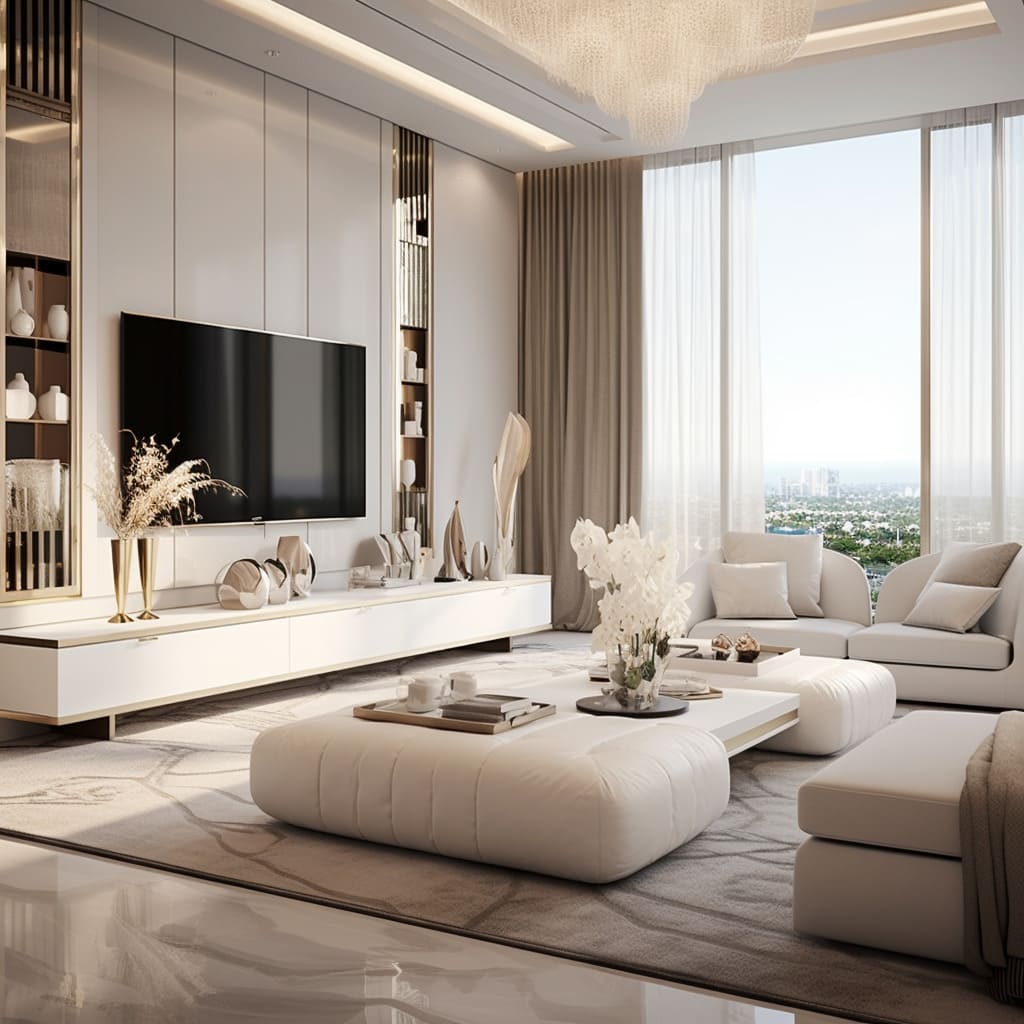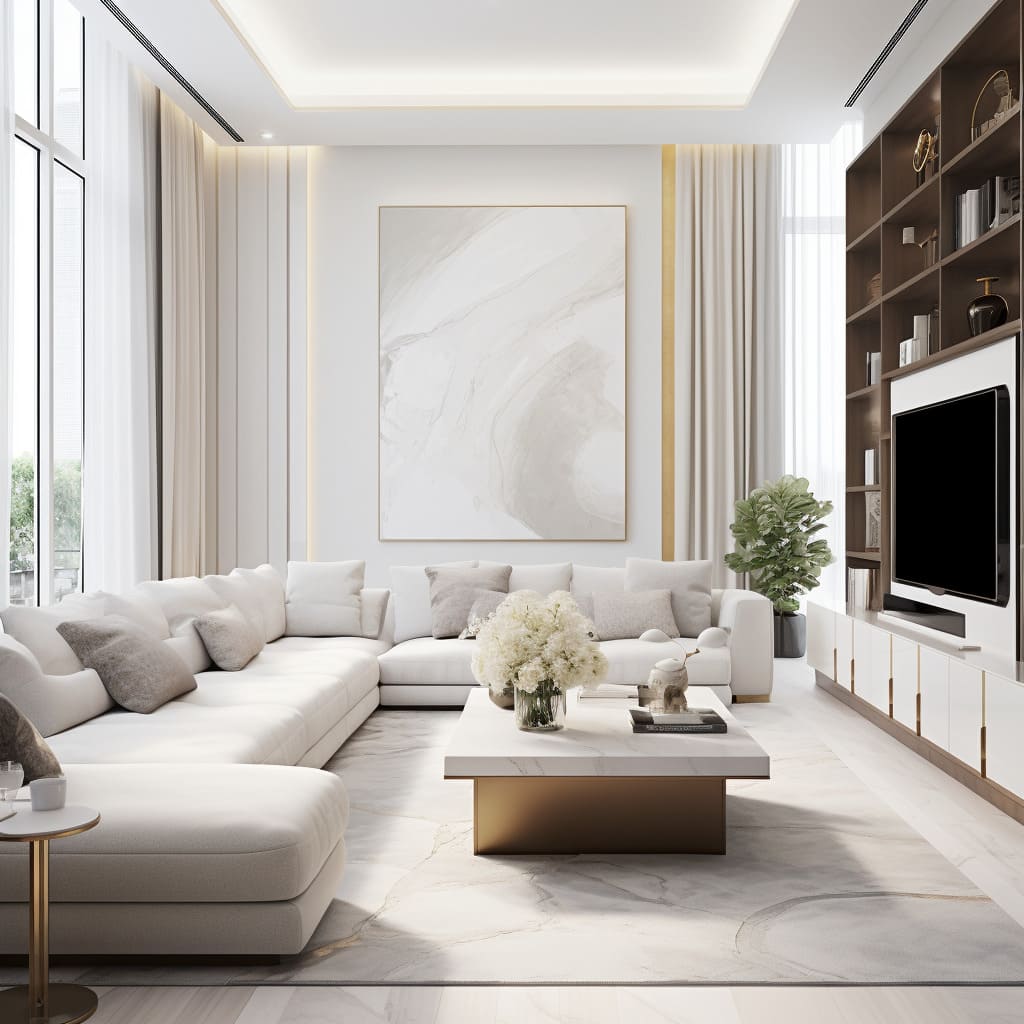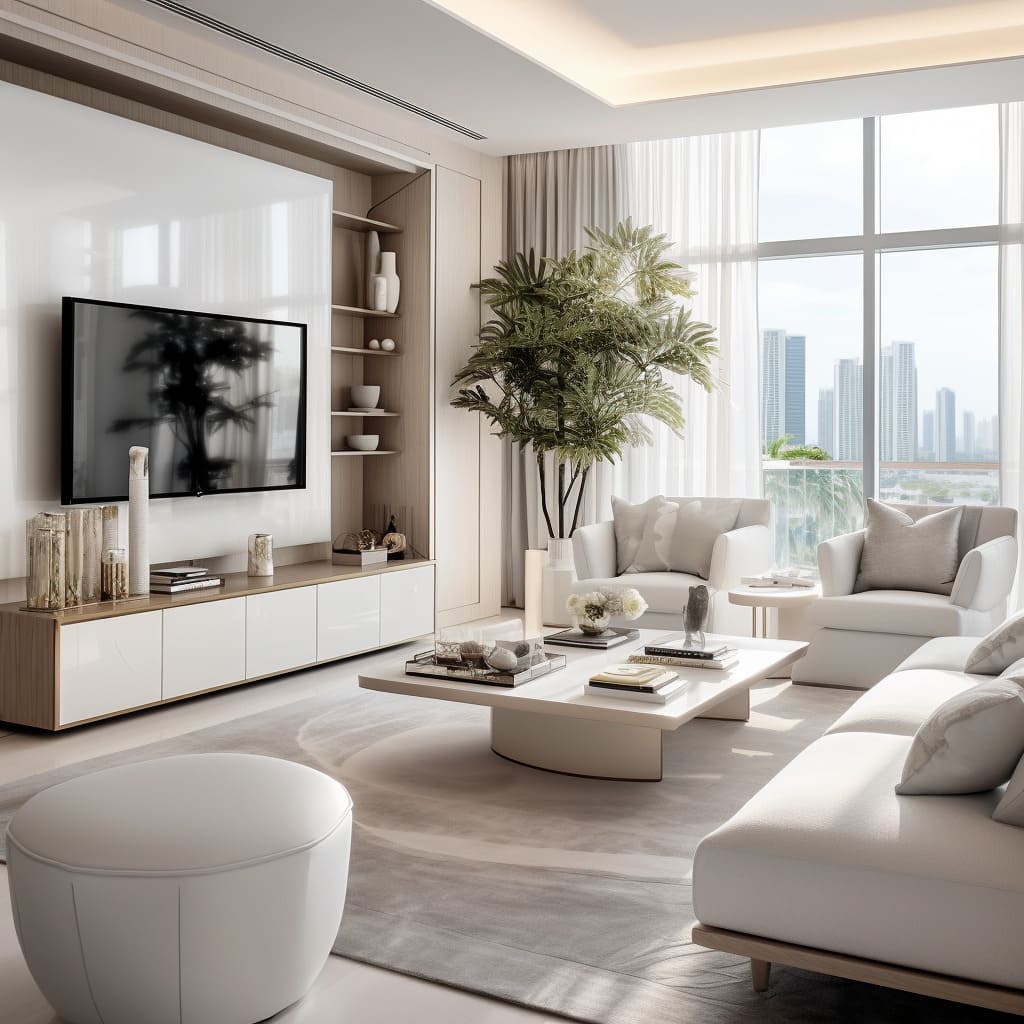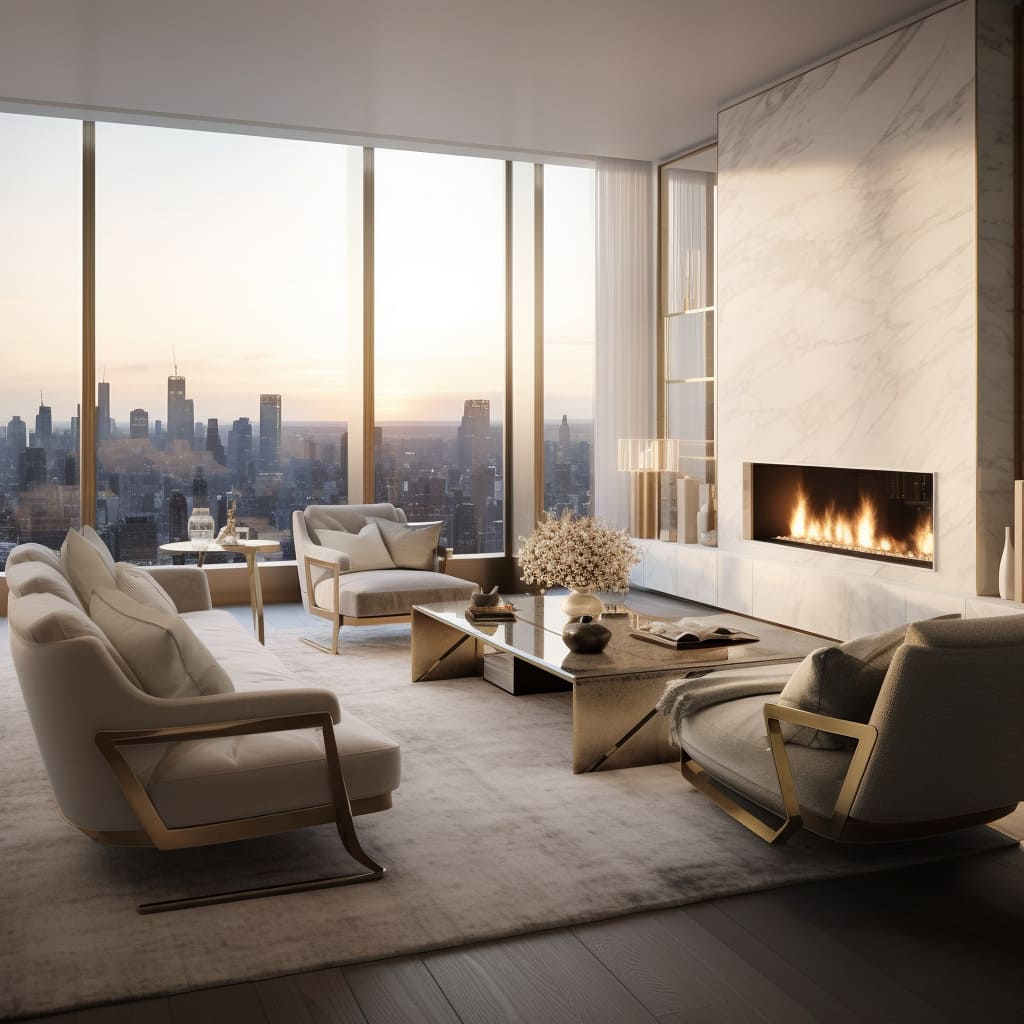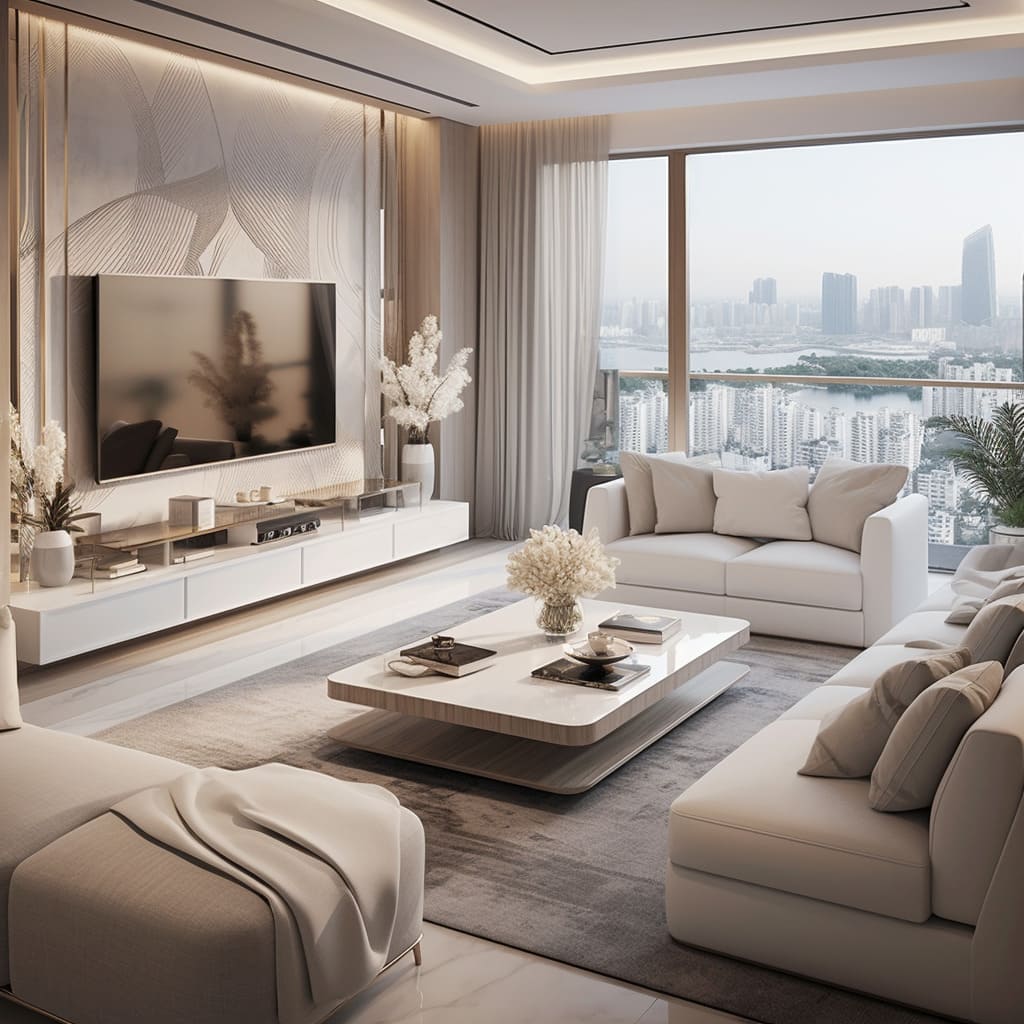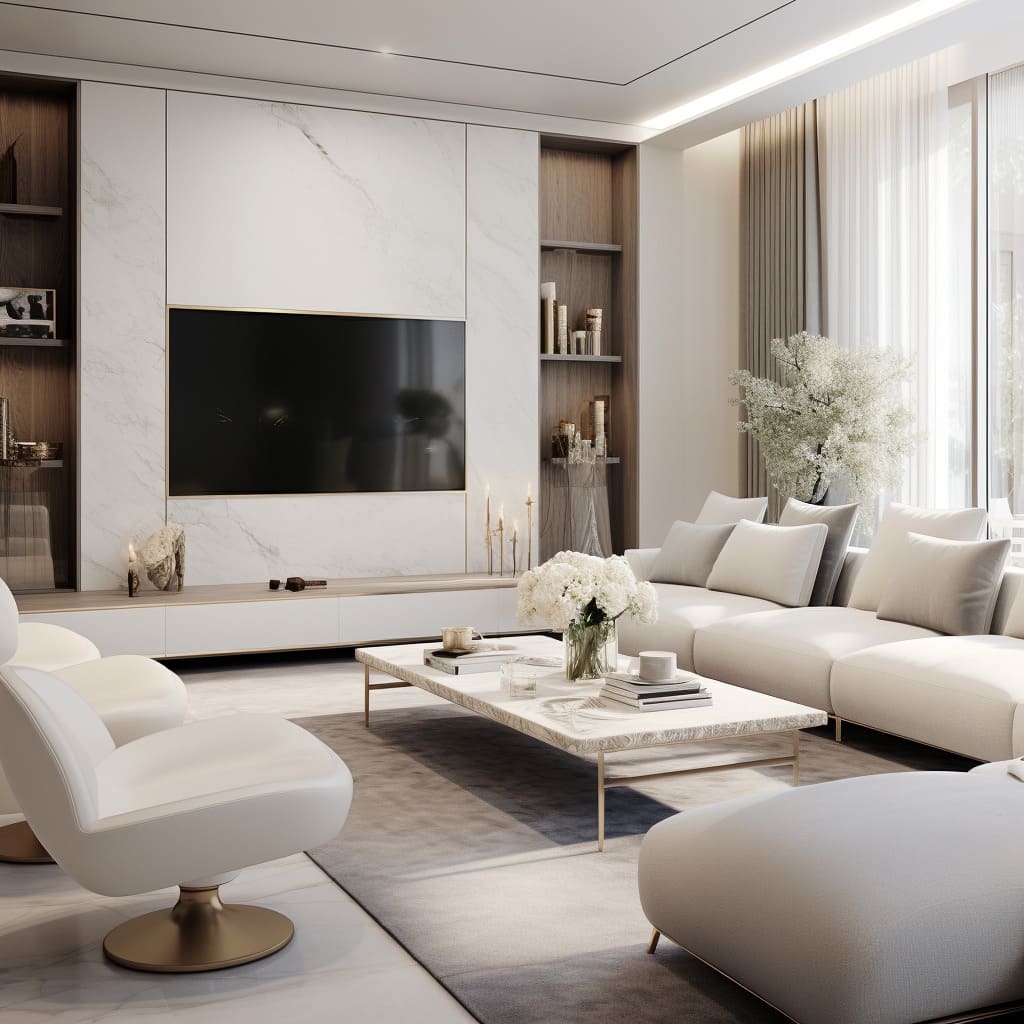Modern minimalism is an ode to simplicity and an intentional approach to living. It’s a design ethos that strips away the non-essential, leaving room for tranquility and clarity in both the home and mind.
This aesthetic is about finding beauty in bareness, with each object serving a deliberate function and contributing to an overall sense of calm. It’s not merely about having fewer things; it’s about cherishing the space between them.
For the urban dweller, this style offers a peaceful retreat from the bustling activity of city life. It represents a conscious choice to prioritize quality over quantity, embracing the essentials and finding elegance in the understated.
The Minimalist Palette: Neutral Tones for Serene Spaces
In a minimalist living room, the color scheme is quiet and restrained, with whites, beiges, and grays reigning supreme. These hues are selected for their ability to create a serene and calming environment, reminiscent of the soft hues found in nature.
The walls, often painted in soft whites, act as a blank canvas, on which the subtle interplay of light and shadow becomes a moving artwork throughout the day. The choice of neutral tones is deliberate, fostering a sense of spaciousness and lightness.
The reflection of natural light off these colors adds depth and a sense of expansion, creating an illusion of a more spacious environment. This palette also allows for versatile decor choices, as it provides a neutral backdrop that can accommodate splashes of color through art or a statement furniture piece without disrupting the peaceful ambiance.
The Heart of Minimalism: Less is More with Furniture
In minimalist design, furniture is chosen with intention and purpose. The pieces selected are typically characterized by their clean lines and functional design.
A low-profile white ottoman, for example, serves multiple purposes as a coffee table, extra seating, or simply a visual anchor in the center of the room. Modular sofas are another favorite in minimalist interiors, offering flexible seating arrangements while maintaining a sleek profile.
The upholstery in light fabrics contributes to the airy feel of the room, and the lack of armrests on the modules emphasizes the open, fluid nature of the space. Each furniture piece is curated not just for its practicality but also for its ability to blend seamlessly into the room’s overall aesthetic, ensuring that the space feels harmonious and uncluttered.
Uncluttered Surfaces: The Art of Organization
A minimalist space is characterized by its meticulous organization and the intentional absence of clutter. Surfaces are kept clear, hosting perhaps a single, thoughtfully chosen vase or a carefully curated stack of books.
This minimalist approach to decor is rooted in the philosophy that each item in the home should have a function or bring joy. There’s a focus on the quality and craftsmanship of the few items displayed, which often leads to a more mindful and sustainable approach to consumerism.
The space is organized in such a way that it’s easy to maintain order, which is essential for the busy city dweller who seeks a hassle-free environment to return to after a long day.
Luxury in Simplicity: Subtle Touches of Elegance
In a minimalist living room, luxury is conveyed through the quality and uniqueness of the few decorative elements that are present. A sculptural, organic-shaped chandelier or a set of vases with gold accents adds a touch of refined elegance without dominating the space.
These elements are chosen for their design and the way they complement the simplicity around them. The luxury in a minimalist space isn’t loud or ostentatious; it whispers of the resident’s appreciation for fine details and design that stands the test of time.
It is the choice of a single exquisite piece over an abundance of average items that defines the luxurious feel of the minimalist home.
Light and Space: Maximizing Natural Light
The design of a minimalist living room often centers around the presence of large windows that invite in abundant natural light. These windows serve as a natural spotlight, enhancing the room’s openness and connection with the outside world.
Sheer curtains might be used to softly diffuse the light, creating a serene glow that highlights the room’s clean lines and smooth surfaces. This interplay of light and space is fundamental to minimalist design, creating an environment that feels alive and connected to the natural rhythm of the day.
Modern Entertainment
In a minimalist interior, the entertainment center is designed to be as unobtrusive as possible. The television, often a flat panel, is mounted on the wall or placed on a sleek, low-profile console.
The console itself is free of fuss and ornamentation, often with a white or black finish that blends with the walls and floors. Wires and electronic accessories are meticulously hidden from view, ensuring that the focus remains on the content being displayed rather than the technology itself.
Personal Style, Minimally: Art and Individuality
Art plays a significant role in the minimalist home, serving as a focal point and an expression of the resident’s personal style. Instead of filling the walls with an array of pictures or decorations, the minimalist approach is to choose one or two impactful pieces.
A large-scale painting with bold strokes of color or a monochromatic piece can make a strong statement, while a sculptural item can add texture and interest to the room. The art chosen for a minimalist space is always intentional, selected for the way it complements the room’s design and reflects the inhabitant’s tastes and interests.
The Urban Connection: City Life at Home
Minimalist living rooms often feature expansive windows that frame the urban landscape, making the city’s skyline an integral part of the interior design. This architectural choice reflects the urban dweller’s connection to the city, embracing its dynamism and energy.
The minimalist space becomes a serene vantage point from which to observe the constant movement and change of urban life. It’s a design that acknowledges the residents’ active lifestyle while offering them a peaceful counterpoint to the city’s chaos.
For the Modern Professional: Who Chooses Minimalism?
Minimalist interiors are particularly appealing to modern professionals and entrepreneurs. For them, a home with less clutter represents a clear mind and an organized life.
It’s a space where they can focus on their goals and unwind without being overwhelmed by their surroundings. The minimalist home is a statement of efficiency and intention, reflecting the inhabitant’s pursuit of a balanced and purposeful life.
Modern minimalism is a design and lifestyle choice that celebrates the beauty of simplicity. It’s an artful blend of form and function that creates spaces where one can find clarity and calm.


